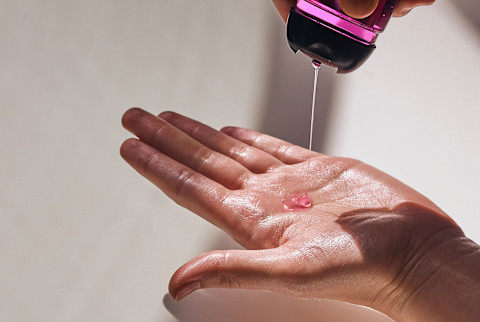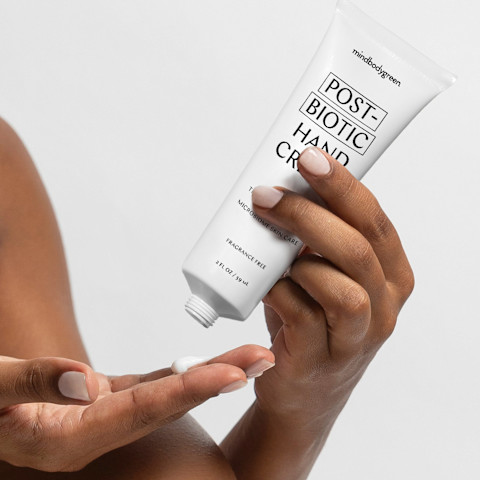Why *Exactly* Hand Sanitizers Are So Drying & What You May Need To Fix It

Over the past two years, a certain accessory became ubiquitous—it could be found in handbags, gym bags, at the entrance to stores, the centerpiece of tables at restaurants. Yes, hand sanitizer has become the must-have item on everyone's minds, for obvious reasons. As we're in the midst of cold and flu season and another COVID spike, it's only become even more crucial. Not to mention, it's that time of year that we're all inclined to spend a little more time socializing or being with others, and so we need to be extra mindful of our hand hygiene to keep ourselves and others safe.
As all the longtime hand sanitizer devotees out there know, there is one notable downside to the product: dry skin.
Why sanitizers dry out your hands.
Given the function and formula of hand sanitizer, they are drying inherently: Using isopropanol alcohol breaks down lipid membranes or protein coatings, destroying the organism in the process. This is actually how sanitizers neutralize germs, viruses, and pathogenic bacteria—by breaking down the outer coat or cellular membrane. (For more information on proper hand sanitizer use, see our quick guide.) Unfortunately, that alcohol also affects skin's lipids and proteins in the process. An unfortunate but inevitable side effect of sanitation.
Of course you can, and should, get options buffered with hydrating bases like aloe or glycerin to help offset the effects (check out our favorites). Additionally you should make sure you are washing your hands as well as using sanitizer so you're not solely relying on the dehydrating agent. "If hands are soiled or have come in contact with any toxins or pesticides, washing with good old soap and water is the best way to go," says immunologist Heather Moday, M.D.
But ultimately, there is no way around some degree of drying. "Hand sanitizers that are effective at preventing the transmission of COVID-19 are, by definition, biome-unfriendly. To kill the virus we are all trying to protect ourselves from, they must contain alcohols, which are incredibly effective germ killers, meaning they can kill many disease-causing bacteria and viruses within seconds," says board-certified dermatologist Whitney Bowe, M.D. "The problem is these types of alcohols do major damage to the natural lipids and fatty acids on the surface of your skin, so they damage your skin barrier."
How you can fix it.
Often I find people are much more diligent about moisturizing after washing—whether out of the convenience of having a hand cream right by the sink or that we've all been conditioned to understand that washing requires hydration after. Much less so with hand sanitizer: Very rarely do I see someone pulling out a hand cream after rubbing in their sanitizer.
But as the American Academy of Dermatology Association advises, you should always follow up your sanitizer use with a hand cream to replenish your skin's lipids and support your barrier structure: "When you use hand sanitizer, apply your hand cream or ointment immediately after the hand sanitizer dries. Because the Centers for Disease Control (CDC) recommends using a hand sanitizer that contains at least 60% alcohol to kill germs, hand sanitizer can be very drying," they say. Additionally, we'd like to note you should wait until the sanitizer has been fully rubbed in and dried down (about 60 seconds) before applying your lotion to ensure efficacy.
We always recommend looking for hand creams with robust formulation to address multiple angles of barrier function—from lipids and antioxidants to biome-nurturing actives. As a base, gentle botanical butters, oils, and extracts can feed the moisture barrier; things like aloe, oat oil, and shea butter offer conditioning emollients. Antioxidants provide protection against free radicals and can offer aesthetic benefits, like brightening and smoothing. Finally, biome-friendly actives (like pre- and postbiotics) help nurture the skin microbiome, one of the most critical parts of our skin framework that keeps our skin hydrated and manages inflammation.

